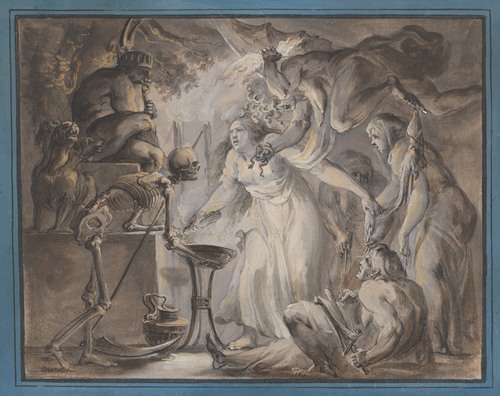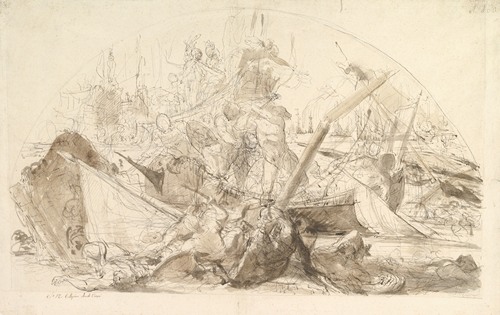
Giovanni David was supported thoughout his career by the Genoese diplomat Giacomo Durazzo, in exchange for his work. His patron's broad interests enabled David to travel extensively, to England, Holland and France, and also to work in a wide variety of media: not just drawings, but prints, stage designs, wax sculptures and paintings in oil and fresco. Durazzo also ensured that David studied in the early 1770s under Domenico Corvi in Rome, where he went on to receive a prize in painting at the Accademia di San Luca in 1775. In that year he moved to Venice. There, in addition to painting and engraving, he designed scenery for the Teatro La Fenice and responded to contemporary Venetian painting. He also made a series of satirical etchings with aquatint of 12 Venetian characters. He returned to Genoa in 1780, then travelled to France, England and the Netherlands.
David’s main activity, however, in the 1780s was in Genoa, where he painted vast panoramic canvases, such as the Battle of the Meloria for the Sala del Maggior Consiglio in the Palazzo Ducale (c. 1783). This work contrasts sharply with the academic tradition established by Raphael Mengs, which was then dominant in Liguria. Tiepolo’s influence can be seen in David’s Virgin Worshipped by the Brignoline Nuns, painted for the church of Nostra Signora del Rifugio, Genoa, while the Presentation of the Virgin (c. 1785; Genoa, S Maria delle Vigne) sets a composition reminiscent of Giambattista Crosato against an architectural background inspired by Veronese.
David passed easily from this type of decoration to the proto-Romantic style, between Giuseppe Bernardino Bison and Felice Giani, of the watercolours depicting Legends of Hercules (ex-Palazzo Podestà Bruzzo, Genoa), in which he revived a 17th-century tradition of animal painting in the manner of Giovanni Benedetto Castiglione, united with a Genoese decorative style reminiscent of Gregorio de’ Ferrari. The artist’s last period, devoted to the decoration (mostly destroyed) of the church of S Agnese, Genoa, was characterized by a more dramatic and visionary style, also evident in drawings and engravings of those years.



